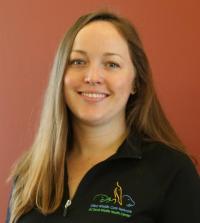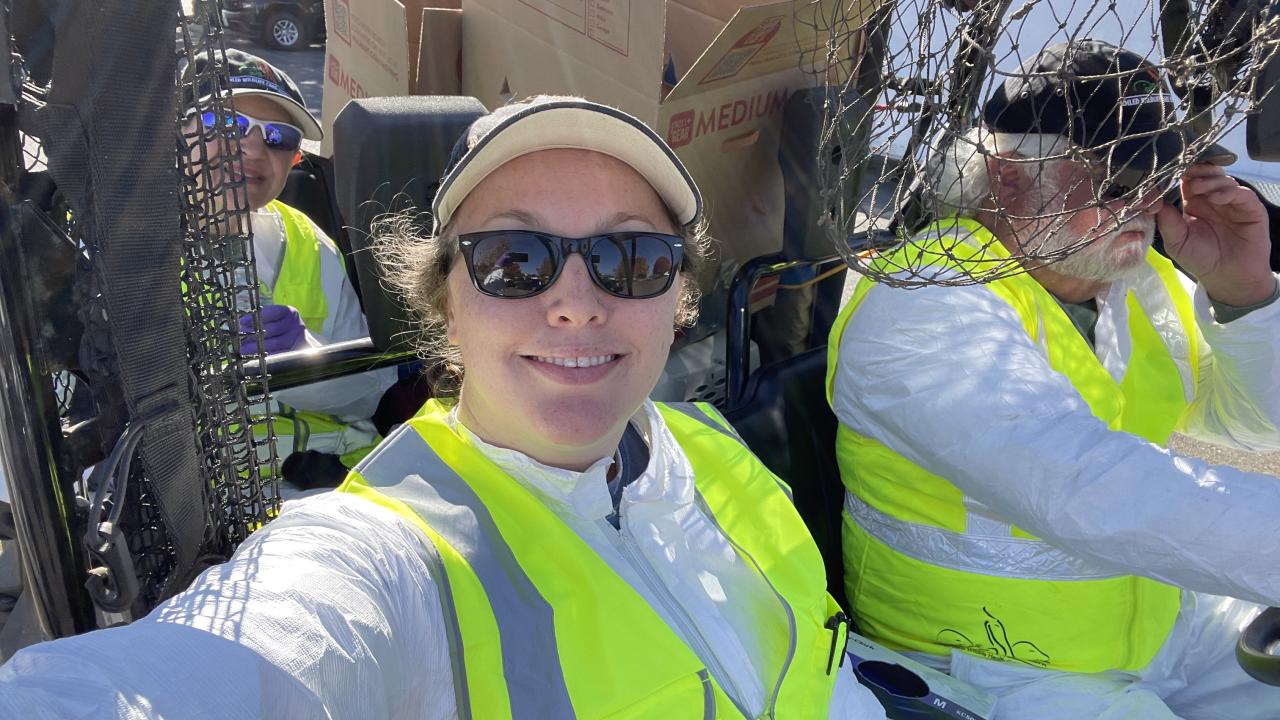
Close to Home
Responding to the Tanzanite Park Incident
Do you have a favorite park? I’m not talking about Yellowstone or Yosemite. I mean a local community park. Either one that you grew up near, playing on the swings and basketball court or maybe it’s your favorite quiet place to walk your dog. Can you picture it?
What kind of wildlife lives in your park? You might be thinking “None, it’s an urban park,” but I’ll bet that even an urban park has visiting sparrows. Maybe some crows and squirrels. Is there a source of water? That dials up the biodiversity quite a lot. You might find water birds like herons, ducks, geese. Maybe you’ll catch a glimpse of a wandering skunk or coyote in the evening hours. Wildlife is all around us. Our neighborhoods and local parks are no exception.
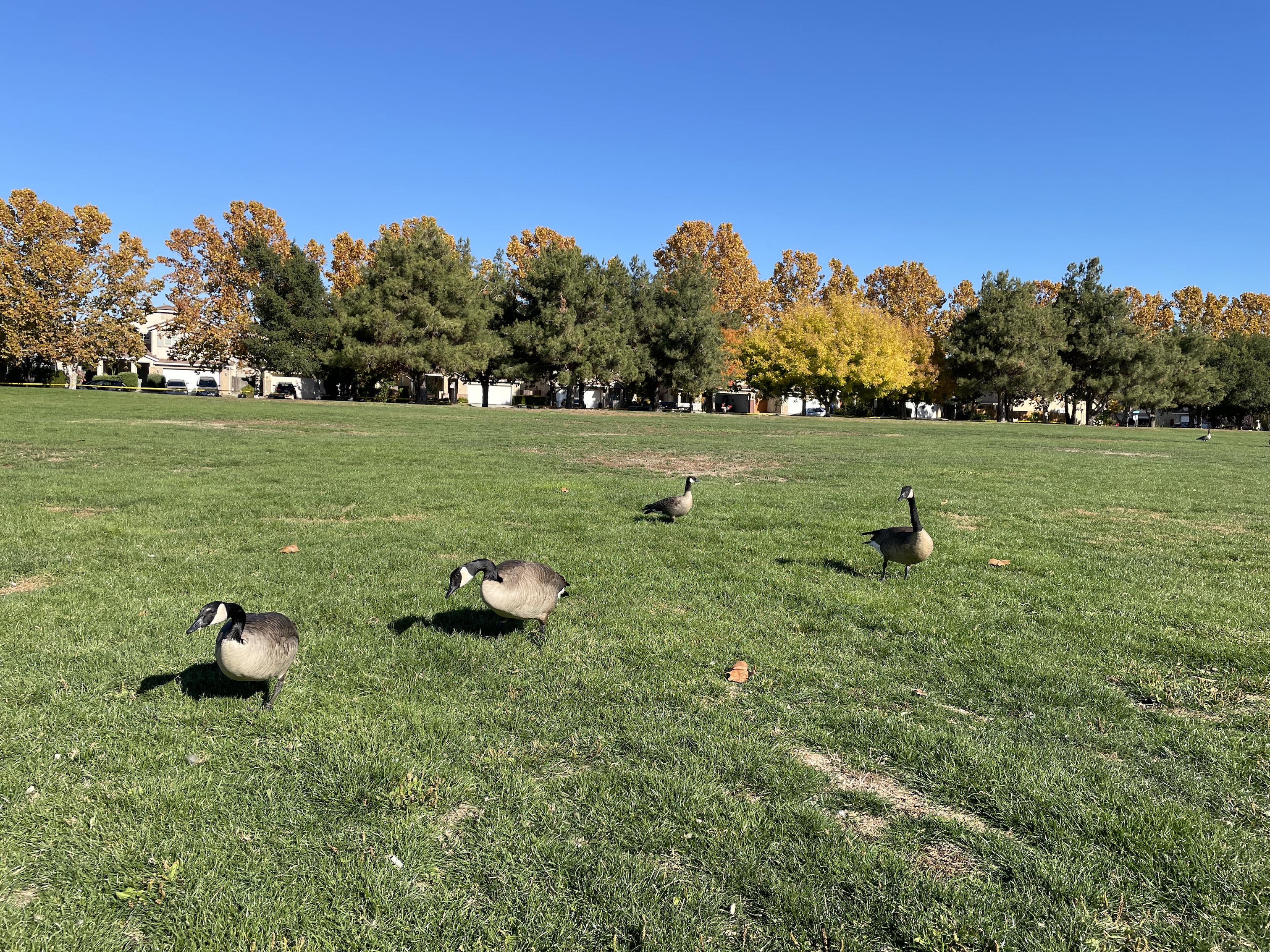
When you hear “the Oiled Wildlife Care Network has been activated to an oil spill in California” your mind probably jumps to vast stretches of shoreline marred with black crude oil. You envision oiled seabirds or even sea lions dotting the beach. It’s not a bad guess. In fact, that is the type of oil spill that catalyzed the formation of the OWCN. You probably did not picture your local park…
On November 14, 2022, my phone "dinged" with an OWCN notification. It’s a sound that I’ve heard hundreds of times as our team communicates crucial oil spill updates. It’s also a sound that jolts me into a state of anxiety and alertness. It can arrive any time of the day (or night) and it means that we may be heading to another incident to perform our mission of providing the best achievable capture and care to oil-affected wildlife in California. Since joining the OWCN in 2019, I have been deployed to spills both in and out of California, with most responses occurring in the Southern California and Santa Barbara regions. That “ding” from my phone often means that I need to grab my pre-packed spill bag and head out of town. But not this time. On this day, my phone “dinged” with news of an oil spill close to home. Less than a mile from home, to be precise.
My fiancé and I purchased our first home in the Natomas community of Sacramento in 2021. As first-time homeowners, the past two years have been a journey filled with peaks (DIY renovation, building a catio) and valleys (emergency roof repair, bad contractors, clearing storm damage). We have embraced our community for the good and dealt with the bad. Natomas feels like home. When we first moved here, we sought out a nice park for exercising our dog. She’s a sweet senior golden retriever and she doesn’t have the patience for boisterous young dogs so a quite dog park was hard to find. Tanzanite Park offered a relaxing walking path along with a modest pond and playground. It was less than a mile from our house, about a 2 minute drive. We visited once and then forgot about it. But when “Tanzanite Park: 6,000 gallon diesel spill” flashed across my phone—images of the park and its wildlife inhabitants flooded my mind.
Oil spills have been my job for the better part of a decade. I have responded to several dozen. It’s not that I have any interest in oil specifically. It’s malodorous and messy and dangerous. But helping wildlife during a mass casualty event inflicted by humans, that is the hook for me. That is when I feel called into action. But that call has never originated so close to home. My team travels to spills around the state and sometimes around the world. We end up in diverse communities very different or sometimes similar to our own. But this, this was a new one for me. This was my home. And I wasn’t quite prepared for the mental shift this response would trigger in me.
In the following weeks, I would get to know my wild neighbors in a way that I hadn’t before. Driving our OWCN response vehicles through my own neighborhood felt surreal in a way that’s hard to describe. While other Natomas residents could only gawk through caution tape into the closed park, I rode a UTV through the fields searching for oiled birds. Oiled Canada geese, mallards, and wood ducks took flight in panic as we approached them in our protective Tyvek suits. Recovery of oiled wildlife is hard. Physically and strategically hard, yes. But also, emotionally. The oiled animals are terrified of us. They think they are fleeing a predator to save their lives. They have absolutely no idea that we want to help them. We have tactics to help mitigate that fear and stress for them, but it cannot be eliminated. I have captured hundreds of oiled animals over the years, but something feels different about it when you are capturing them in a place that you knew before the oil spill. Back when you never would have imagined that such a fluke and tragic event could occur in a regular neighborhood pond.
Where once I had felt like part of the landscape, I now felt like a monstrous intruder. Instead of peacefully walking by a flock of grazing geese, I had to discretely drag a net behind me, isolate the one dripping with water from the loss of its waterproofing, and while he was distracted by a piece of food I tossed his way, snatch him up while he shrieked in protest. It felt like a betrayal. But a necessary one. That goose who was struggling to stay warm in the frigid temperature, who was being bullied by healthier birds, whose skin was burning from contact with the refined oil, now had a chance at survival. He would be warmed, stabilized, fed, cleaned, and hopefully returned home someday.
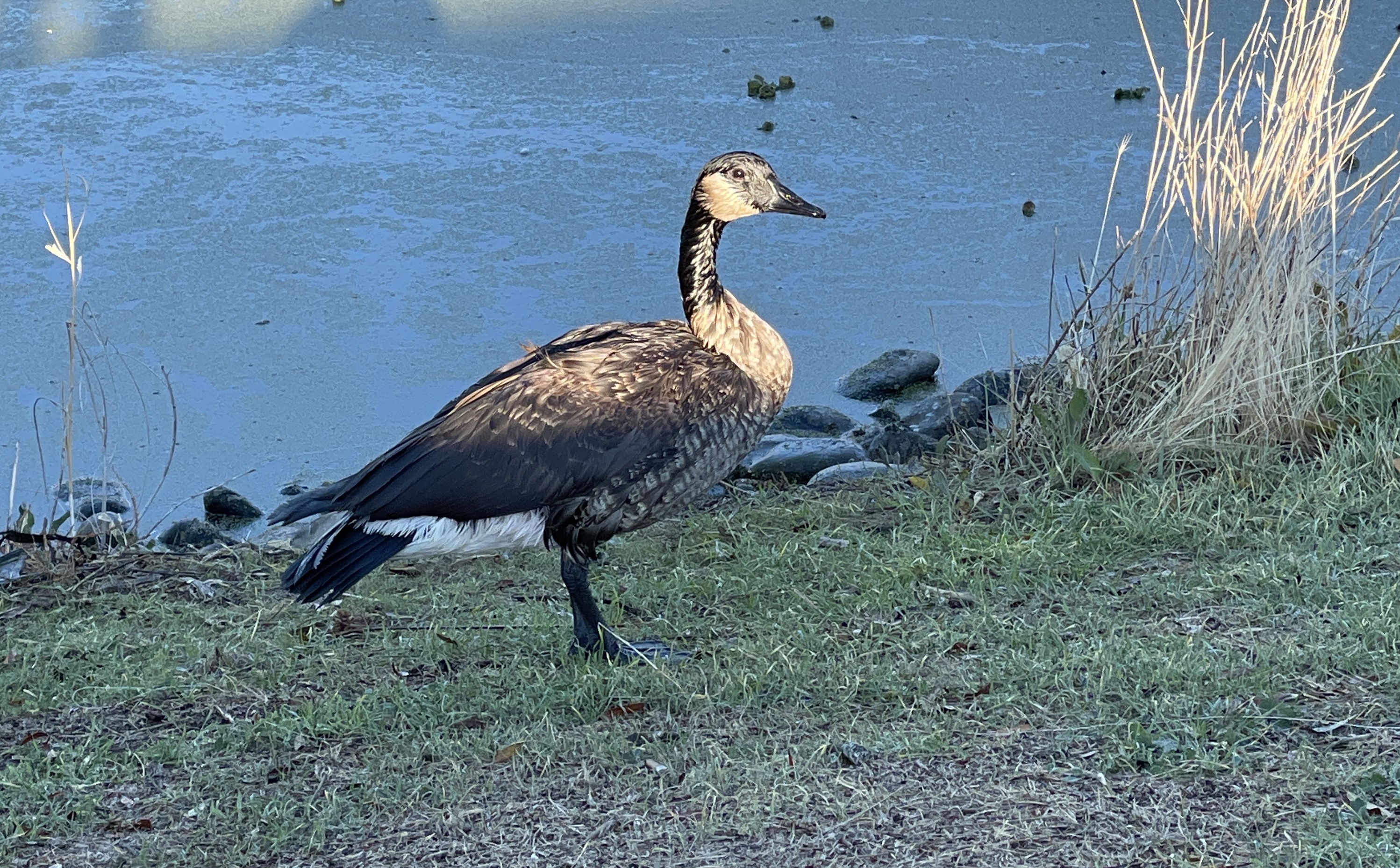
I spent the first few days working in the field, attempting to capture the affected animals. Eventually I was needed in the Primary Care Facility while other teammates continued efforts in the field. My 2-minute commute into the park each morning turned into an hour as I traveled to the San Francisco Bay Oiled Wildlife Care and Education Center (SFBOWCEC) almost daily for the next five weeks. A long drive on top of long work hours was a challenge, but it was also an opportunity to spend sleepy evenings and days off at home instead of at a hotel room. In a way, distant oil spill responses offer a small reprieve from the responsibilities of daily life. Background noise is at a minimum and it’s easy to focus on your duties when you return to a bland hotel room for rest in between shifts. A “home spill” just hits different. The dog still needs to be fed, you’re still responsible for cleaning your own bathroom, your family expects some level of social participation. This felt both luxurious and exhausting at times.
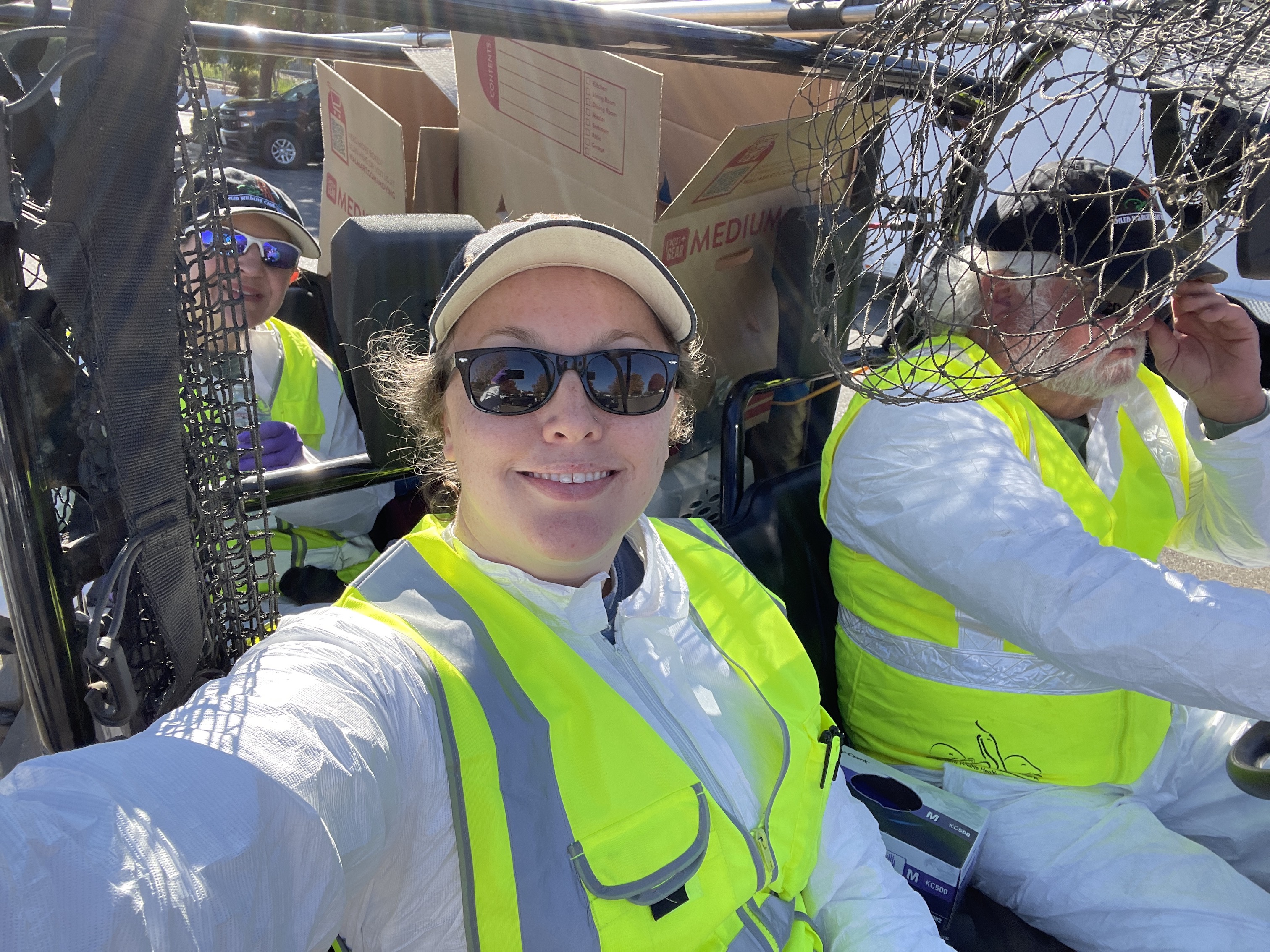
I became very well acquainted with the wildlife in my neighborhood. I knew the Canada geese and mallards were plentiful at Tanzanite Park, but the wood ducks and pied-billed grebes were less expected. The biggest surprise of all was the large family of North American beavers inhabiting a lodge within the park. We had been looking for the beaver that the oil clean-up workers had reported, but had not been able to locate it thus far. We caught the first one on my last day in the field. I had been staring at an oiled American coot who was pacing around in shallow water and tules, only about 20 feet from me, but completely out of my reach even with a net gun at my disposal. I stared at the bird, willing him to come to me and knowing he was likely going to evade us entirely. Giving up on the coot, I took a step back and at that moment, a huge beaver darted out of its hiding place and jumped into the water directly in front of me! Beavers are large and potentially dangerous when threatened. Rather than diving on top of the frightened animal without the proper gear, I shouted to my team who quickly arrived with the needed supplies. We netted the giant rodent and secured her in a metal (gnaw-proof) crate. I never saw the coot again.
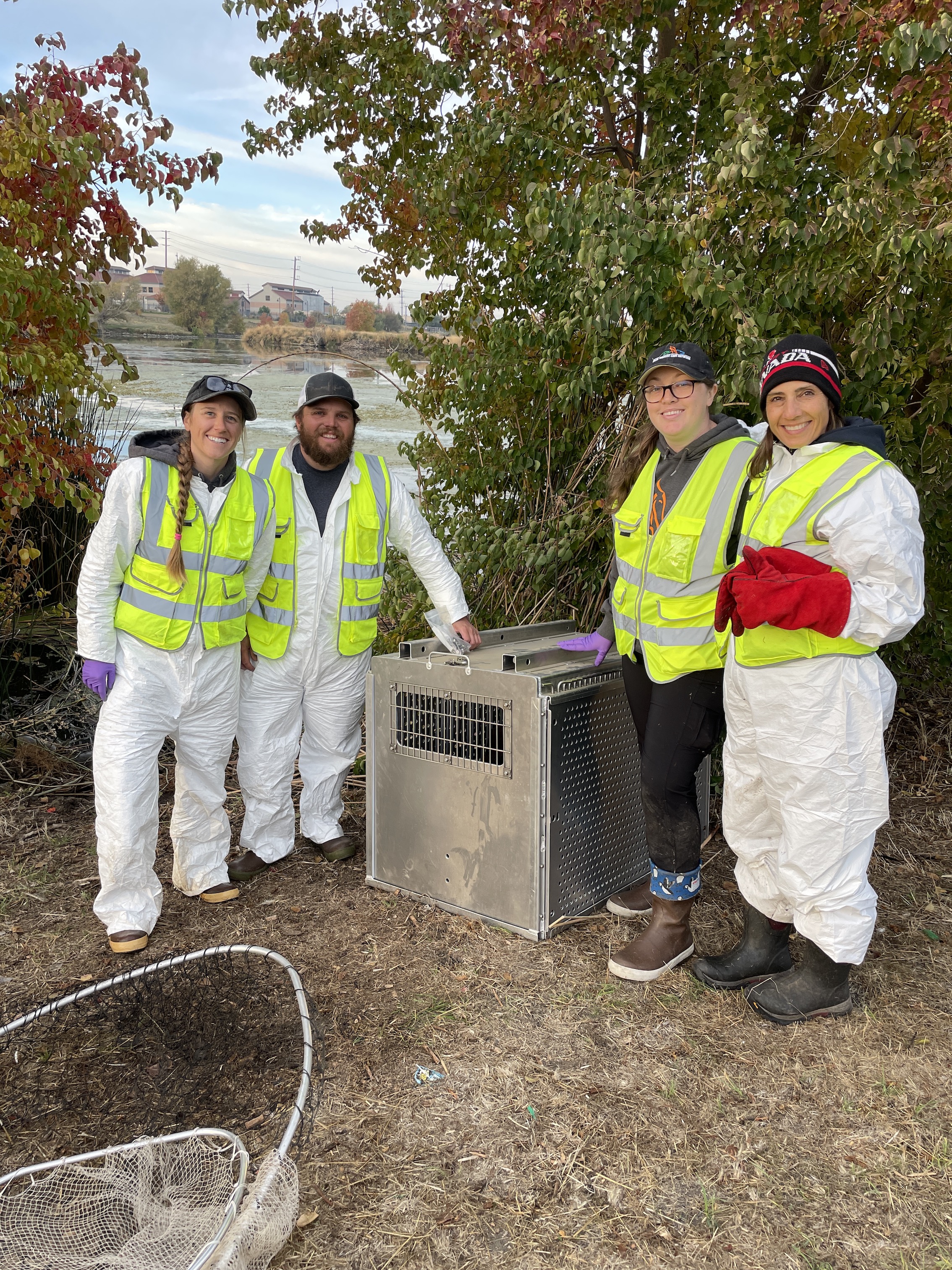
Driving to SFBOWCEC to begin care on the beaver that day, I found it hard to reckon with the fact that a beaver (or many beavers as we would soon learn) would choose to make their home in such an underwhelming suburban park. The team felt rather victorious that day, having captured the beaver that had evaded us since day one. Until we started learning more about beavers and their social lives, that is… Within a day, we surmised that beavers lived in family groups and a game camera on an inconspicuous pile of debris that turned out to be their lodge, revealed to us that no less than six beavers resided at Tanzanite Park. Traps were strategically baited and set. Eventually the entire beaver family was brought in for care. The effects of oiling varied from individual to individual. Some experienced extensive chemical burns from the diesel exposure. Ultimately, four of the six beavers survived their ordeal and were released back home to Tanzanite Park.
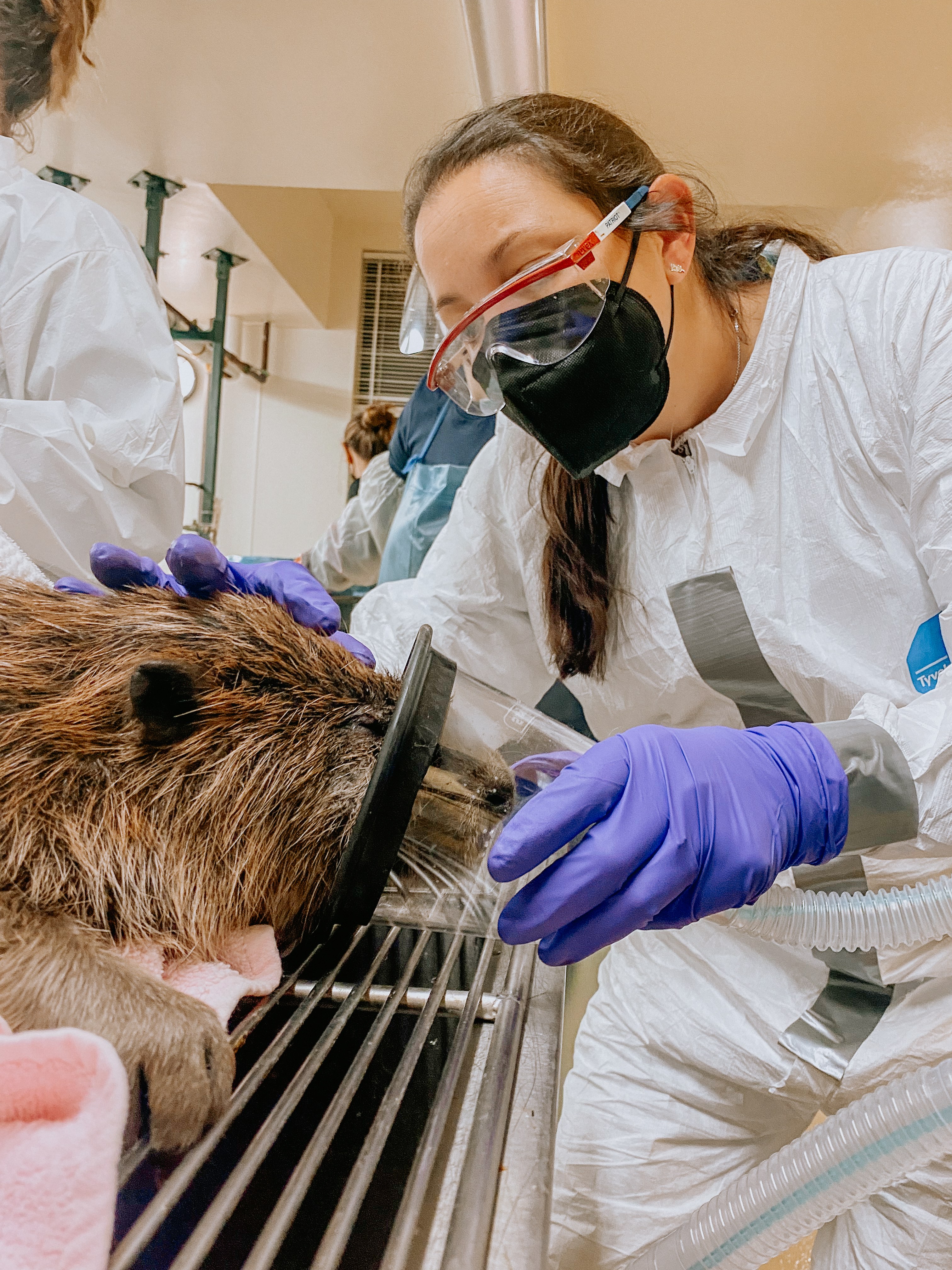
We also released twenty-five of the forty live collected birds. Some birds succumbed to the effects of oiling or injuries, and some were triaged prior to intake over concerns of highly pathogenic avian influenza (HPAI). HPAI is a deadly disease for wild birds. It’s also dangerous to livestock, some mammals, and although unlikely, it does have the potential to infect humans. Waterfowl populations are being hit hard by this outbreak of HPAI and the birds of Tanzanite Park were no exception. Fortunately, our HPAI clinical sign screening process did what it was meant to do. We managed to keep HPAI from entering our facility. Birds that displayed clinical signs for HPAI (neurologic, corneal edema, etc.) upon capture were humanely euthanized offsite to protect the rest of the patients.
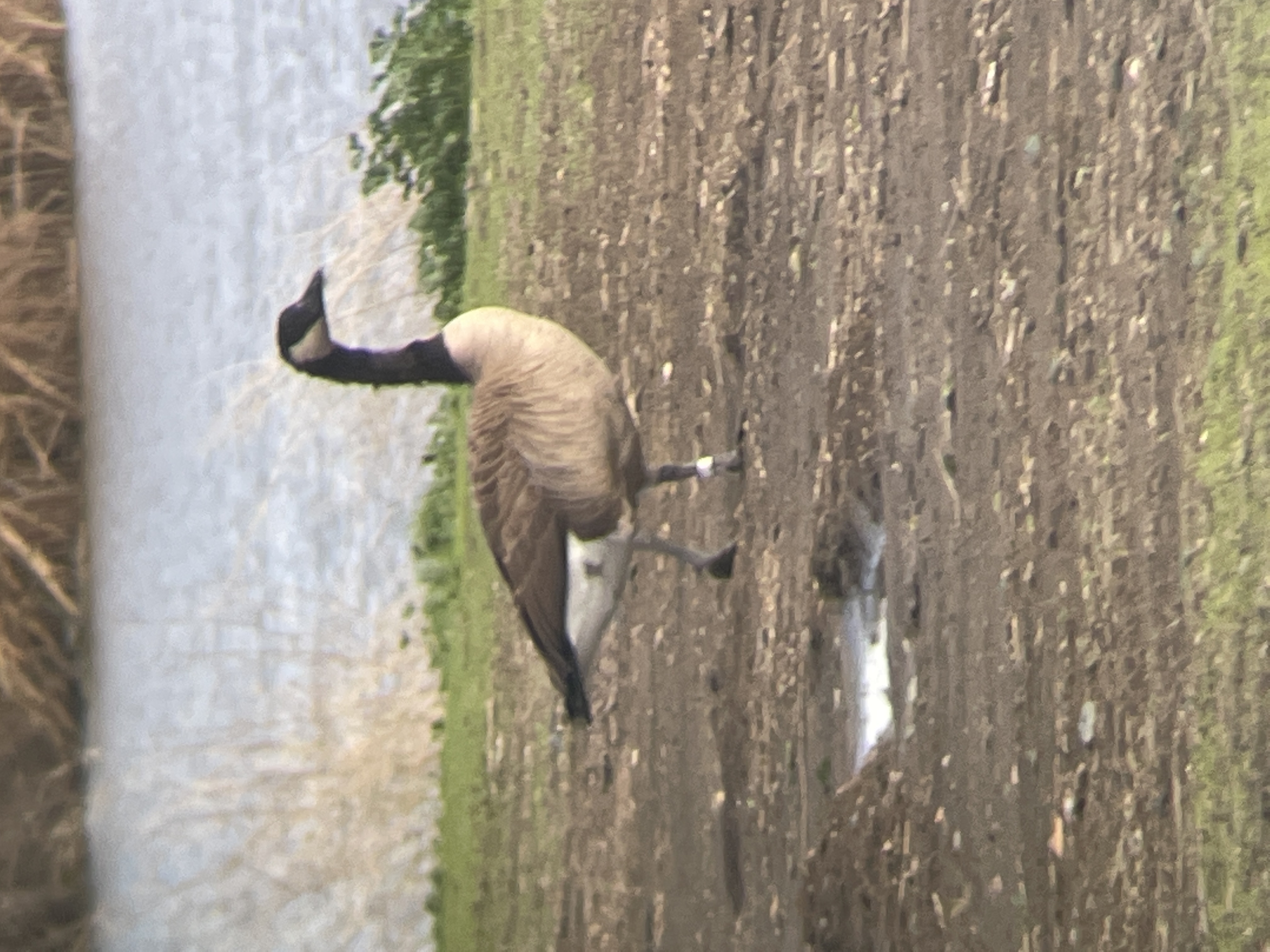
The surviving twenty-five Canada geese were banded upon release. Their shiny aluminum rings, souvenirs from an experience they never wanted to have, catch the sunlight at the right angle. The last birds and beaver were released on December 28, 2022. Game cameras staged at the pond told us that all four released beavers (all confirmed to be female) reunited and reclaimed their lodge. I visit the park occasionally now. I checked on the beaver lodge after the severe storms Northern California had in early January. It was intact and there were signs that the beaver occupants were still utilizing it regularly. Many of the released Canada geese have stayed at the park. The glimmer from a leg band catches my eye each time I visit. I can usually identify five to seven of our former patients grazing in the grass or resting along the shore of the pond. The banded birds tend to be in pairs. I can’t help but wonder if those were bonds they formed in our facility... maybe in one of our aviary pools where they awaited final confirmation of their waterproofing and resolution of any injuries. I also wonder about bonds that were broken. Geese mate for life, though they can find a new partner if theirs is lost. North American beavers also exhibit strong family bonds. Release days bring a mix of emotions. Joy, certainly, for the survivors who are going home, but also grief for the animals who lost their lives or their family members as a result of the spilled diesel. Becoming so familiar and hands-on with my wild neighbors was a privilege that most never get to experience. This response helped me to better understand what other communities feel when an oil spill affects them. The public’s “prying eye” seems less critical now, and more concerned. I know how distressing it is to see your community’s natural areas tainted with oil. I’m grateful that I did not have to wonder what was being done. It was a privilege to be one of the people doing it.
- Sam Christie, Wildlife Care Specialist
